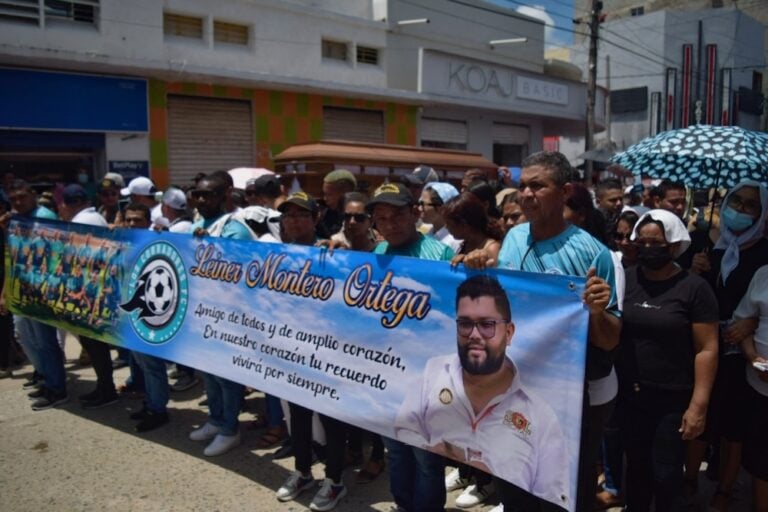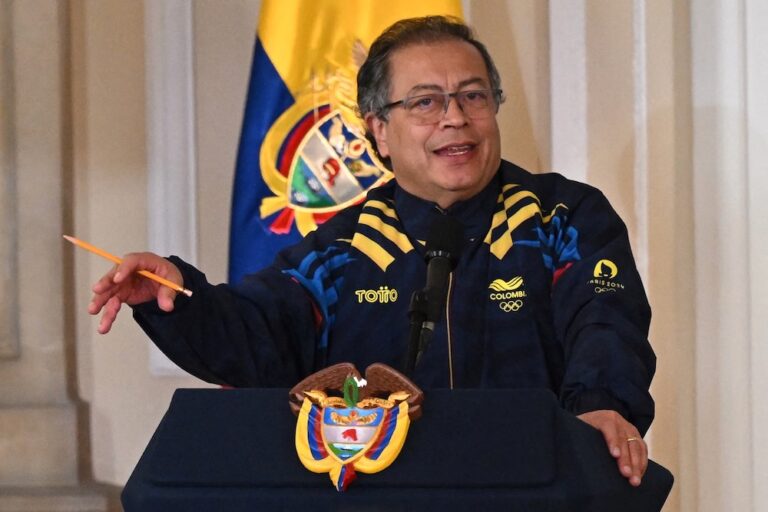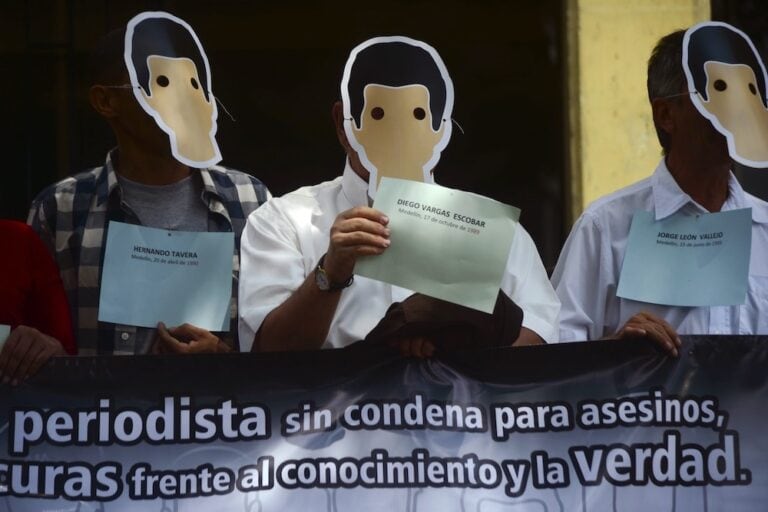(FLIP/IFEX) – The following is an 8 February 2008 FLIP press release: FLIP releases report on the press freedom situation in 2007 On the Day of the Journalist, 9 February 2008, FLIP releases “The Challenges of Reporting in Colombia”, its annual freedom of the press report for 2007. Since 1998, FLIP has monitored and documented […]
(FLIP/IFEX) – The following is an 8 February 2008 FLIP press release:
FLIP releases report on the press freedom situation in 2007
On the Day of the Journalist, 9 February 2008, FLIP releases “The Challenges of Reporting in Colombia”, its annual freedom of the press report for 2007.
Since 1998, FLIP has monitored and documented the violation of press rights through its network for journalists’ protection (Red de Alerta y Protección a Periodistas, RAP). Its 2007 report compiles the press violation figures for the year and provides a revealing overview of the state of journalism in the country.
In 2007, 162 violations of press freedom were recorded, amounting to the equivalent of a violation occurring every second day. Of these violations, more than half were in the form of threats received by journalists relating to their work. Some of the threats were so serious in content that 16 journalists felt obliged to leave their homes for their own safety, adding their number to the enormous number of displaced persons in the country.
There were two journalists killed in Colombia in 2007. In January, journalist-lawyer Elacio Murillo Mosquera was murdered in Istmina, Chocó. In September, journalist Rubén Darío Arroyave was found dead in Cartago, Valle. Their killings are considered to be work-related.
Journalists were also the victims of abusive and degrading treatment, and were impeded from conducting their work.
In most cases, the perpetrators of these violations remain unknown. Of those identified, the most numerous are members of armed paramilitary organizations, who account for about 30 percent of all violations. This occurred despite the fact that 2007 marked the fourth year of demobilization efforts, and the second year of the so-called “Justice and Peace” process.
Other perpetrators include members of the FARC (Fuerzas Armadas Revolucionarias de Colombia) guerrilla group, individuals at large, public officials and members of the security forces. The last two categories of perpetrator account for 21 percent of the violations. It is worrisome that they are alleged to be responsible for the same kind of acts to which armed groups often resort, such as threats and inhumane or degrading treatment.
To respond to these violations, the government counts on a journalists’ protection programme run out of the interior ministry. Without dismissing the work of this programme, FLIP nonetheless notes that the programme itself has endangered the safety of journalists by delaying, or by failing wholly or in part to ensure, the implementation of needed security measures.
With “The Challenges of Reporting in Colombia”, FLIP seeks to make authorities aware of the urgent need for precautionary measures to protect the press and for justice to be done in the case of press freedom violations. It also seeks to motivate free expression organizations to unite their efforts; and to bring to the attention of the public at large the difficulties confronting those who, day after day, rise to the challenge of being a journalist in Colombia.
The full report (in Spanish only) is available at: http://www.flip.org.co/veralerta.php?idAlerta=277


